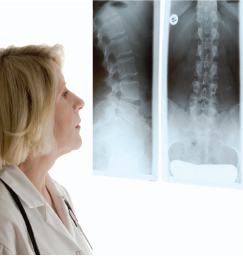
Agenturfotografin / shutterstock.com
Currently, treatment options for patients with peripheral spondyloarthritis, which includes psoriatic arthritis and non-psoriatic types, are limited. Philippe Carron, MD, Department of Rheumatology, Ghent University Hospital, Belgium, says, “One of the problems we encounter in the daily management of peripheral spondyloarthritis is that we have no other therapeutic options in patients refractory to NSAIDs [non-steroidal anti-inflammatory drugs], sulfasalazine and methotrexate. Most of these patients are young and experience a high burden of disease. We know that TNF inhibitors are efficient, but they are not reimbursed unless there is concomitant psoriasis or sacroiliac involvement, which is not always present.”
The CRESPA Study
Dr. Carron is also the first author of a paper published in Arthritis & Rheumatology.1 The CRESPA study (clinical remission in peripheral spondyloarthritis) analyzed patients diagnosed with peripheral spondyloarthritis (as fulfilled by the Assessment of SpondyloArthritis International Society [ASAS] classification criteria) who had experienced symptoms for fewer than 12 weeks.1 The randomized, placebo-controlled phase was followed by an open-label phase from Weeks 24–48. The study included 60 patients, 40 of whom received 50 mg of the TNF inhibitor golimumab subcutaneously every four weeks until Week 20 and another 20 patients who received placebo.
Golimumab was stopped in patients in sustained clinical remission. This was defined as complete absence of peripheral arthritis, enthesitis and dactylitis at two consecutive visits (at Weeks 12, 24, 36 and 48). Patients with sustained disease activity at the end of Week 24 received 50 mg golimumab every four weeks through Week 48. In the open-label extension, patients restarted 50 mg golimumab for a total of 104 weeks if they developed a clinical relapse (at least one swollen joint plus enthesitis or dactylitis) after an initial remission. Those showing partial response (at least 40% improvement from baseline as defined by the Peripheral Spondyloarthritis Response Criteria) also received golimumab for the extension period.
Eighty-two percent of patients (49/60) achieved sustained clinical remission following induction of golimumab. Of the 49 responders, 30 were in remission by Week 24 and another 11 by Week 35; eight more were in remission by Week 40. No significant response occurred in placebo-treated patients, ruling out spontaneous remission. The researchers followed patients from a range of 23 months to five years after golimumab cessation. At that time, 53% of the responders (26 of 49) were still in sustained and drug-free remission.
The researchers also analyzed factors that predicted relapse after drug withdrawal. Both polyarticular disease and pre-existing psoriasis were strong predictors for relapse. In patients with psoriasis, the estimated odds for sustained drug-free remission was 80% lower (OR=0.2, 95% CI 0.06 to 0.65, P=0.008), and patients with polyarticular disease had odds 83% lower (OR=0.17, 95% CI 0.03 to 0.84, P=0.03) than for patients without polyarticular disease or psoriasis.

